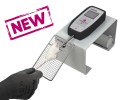Authors
JS Lee, YJ Jeon, SY Park, CG Son
Lab
Institute of Traditional Medicine and Bioscience, Dunsan Hospital of Daejeon University, Daejeon, Korea
Journal
Biomolecules
Abstract
Chronic fatigue syndrome (CFS) is one of the most intractable diseases and is characterized by severe central fatigue that impairs even daily activity. To date, the pathophysiological mechanisms are uncertain and no therapies exist. Therefore, a proper animal model reflecting the clinical features of CFS is urgently required. We compared two CFS animal models most commonly used, by injection with lipopolysaccharide (LPS from Escherichia coli O111:B4) or polyinosinic: polycytidylic acid (poly I:C), along with bilateral adrenalectomy (ADX) as another possible model. Both LPS and poly I:C-injected mice dominantly showed depressive behaviors, while ADX led to fatigue-like performances with high pain sensitivity. In brain tissues, LPS injection notably activated microglia and the 5-hydroxytryptamine (HT)1A receptor in the prefrontal cortex and hippocampus. Poly I:C-injection also remarkably activated the 5-HT transporter and 5-HT1A receptor with a reduction in serotonin levels in the brain. ADX particularly activated astrocytes and transforming growth factor beta (TGF-beta) 1 in all brain regions. Our results revealed that LPS and poly I:C animal models approximate depressive disorder more closely than CFS. We suggest that ADX is a possible method for establishing a mouse model of CFS reflecting clinical features, especially in neuroendocrine system.
BIOSEB Instruments Used:
Grip strength test (BIO-GS3)

 Douleur - Allodynie/Hyperalgésie Thermique
Douleur - Allodynie/Hyperalgésie Thermique Douleur - Spontanée - Déficit de Posture
Douleur - Spontanée - Déficit de Posture Douleur - Allodynie/Hyperalgésie Mécanique
Douleur - Allodynie/Hyperalgésie Mécanique Apprentissage/Mémoire - Attention - Addiction
Apprentissage/Mémoire - Attention - Addiction Physiologie & Recherche Respiratoire
Physiologie & Recherche Respiratoire
 Douleur
Douleur Métabolisme
Métabolisme Système moteur
Système moteur Neurodégénérescence
Neurodégénérescence Thématiques transversales
Thématiques transversales Système musculaire
Système musculaire Functions de motricité générale
Functions de motricité générale Troubles de l'humeur
Troubles de l'humeur Other disorders
Other disorders Joints
Joints Système Nerveux Central (SNC)
Système Nerveux Central (SNC)  Système sensoriel
Système sensoriel
